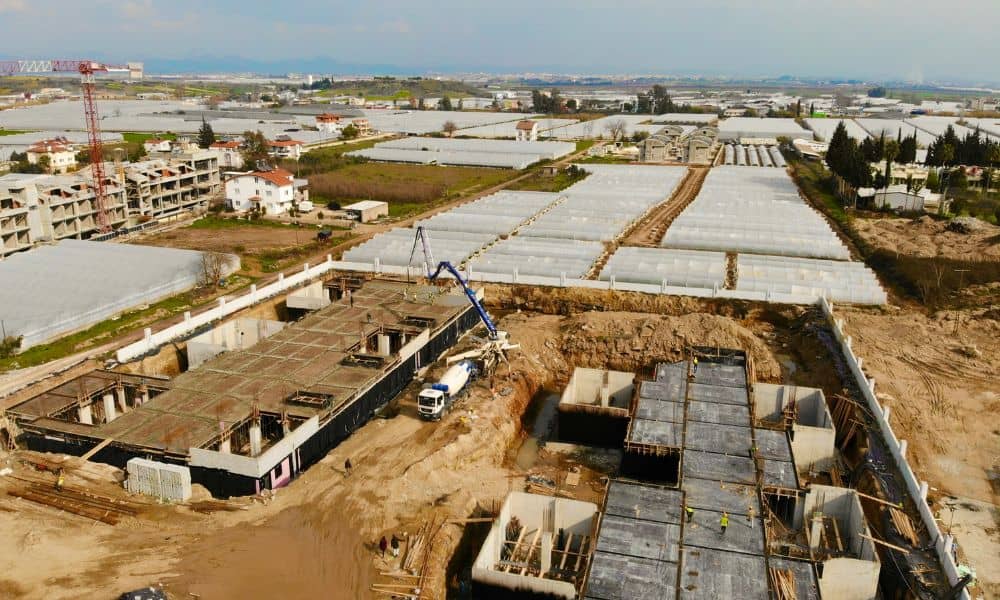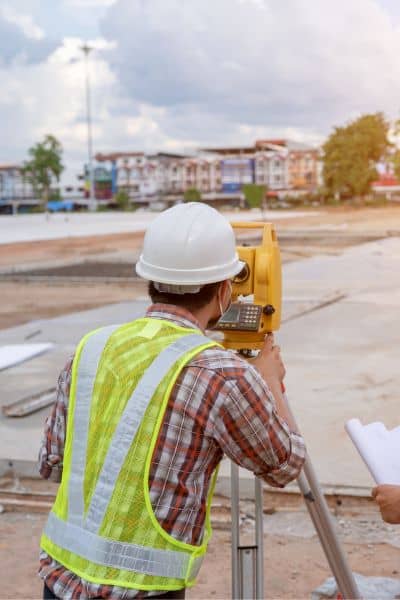
When people hear the term construction survey, they often think about surveyors setting up tripods to mark property lines. That image is partly true, but it doesn’t tell the whole story. In reality, surveys are the hidden framework behind every building project. They make sure structures go up in the right spot, at the right height, and on the right ground. Without them, even the strongest designs can fall apart.
Over the past week, Sacramento was reminded of how critical surveys really are. News of the Sacramento Weir expansion delay spread quickly after officials confirmed that the project is now nearly a year behind schedule. The cause? Soil settlement at the north abutment wall. Engineers discovered that the ground beneath that section was sinking more than expected, forcing construction to pause. As a result, the completion date has been pushed back to late 2027.
The delay sparked frustration. Local residents count on the Weir project for improved flood protection, and a year-long setback means more waiting. But for anyone in the construction or development world, the story offers an important lesson. When surveys are frequent, detailed, and accurate, they can catch problems like settlement early. They can save not only time and money but also trust from the public.
The Sacramento Weir has been a key flood control structure for decades. It helps release water from the American River during storms, protecting neighborhoods like Natomas and West Sacramento from dangerous flooding. The expansion project was meant to increase its capacity and improve safety for the entire region.
So what went wrong? In short, the soil moved. When ground beneath a structure shifts or compresses, builders call it settlement. Not all settlement is bad—some movement is expected on every project. But when one part of the foundation sinks more than another, engineers call it differential settlement. That’s when problems start. Imagine a table where one leg sinks into soft ground while the others stay firm. The entire table tilts, and anything on top becomes unstable. For the Weir, even a few inches of uneven settlement created risks too big to ignore.

This is where surveys come in. A construction survey is more than lines on a map. Surveyors set control points around the project and return regularly to measure if anything has shifted. They track benchmarks, elevations, and alignments, comparing today’s numbers against the ones from last week or last month.
If the ground starts to settle, the data reveals it. Engineers can then act quickly, adjusting designs or adding support before permanent structures are built. Without that feedback, a project may continue full speed ahead, only to face delays or failures later on.
In the case of the Sacramento Weir, survey work is part of how the problem was discovered. But the scale of settlement was larger than expected, forcing a major pause. The lesson is clear: ongoing survey work must be built into every stage of a project, not just the beginning.
Many people, including some builders, assume surveying happens once at the start of a project. They think surveyors simply mark boundaries, hand over the report, and walk away. That’s a dangerous myth.
Surveys are more like health checkups. You don’t visit the doctor once and assume you’ll stay healthy forever. You go back regularly to make sure everything is still working. Construction sites need the same routine.
Surveyors recheck benchmarks and backsights, often tying them to national systems like NAVD88. They confirm that elevations haven’t shifted and that layouts still match the design. When something changes, their data is proof. It’s the difference between guessing and knowing.
In Sacramento, with its rivers and floodplains, the need is even greater. Soil near levees can shift quickly, especially after storms or changes in water levels. Surveys become the eyes and ears of the project, warning when the ground isn’t as stable as it seems.
So what should local builders take from the Weir delay? First, surveys are not an optional step. They are an investment in staying on schedule and protecting budgets. A missed settlement issue on a private development might not make the evening news, but it can still add months of delays and thousands of dollars in costs.
Developers should partner with surveyors throughout construction. Establish control networks at the start, then keep checking them as the project progresses. Document every shift, no matter how small, and communicate that information with the engineering team. When data shows a problem, act immediately. That transparency reduces disputes and builds trust among contractors, inspectors, and owners.
It’s also worth noting that surveys protect reputations. A project known for strong quality control earns respect, while one with costly mistakes may lose clients in the future.
Big public projects like the Weir may seem far removed from everyday life, but the same principles apply to homeowners. Let’s say you want to build a backyard ADU, a new garage, or even just a taller fence. If you skip the survey, you risk building in the wrong spot or on unstable soil.
Imagine discovering after construction that your garage crosses into a flood easement. Or picture rainwater pooling into your neighbor’s yard because your addition changed the slope of the land. These issues can lead to legal battles, city fines, and expensive corrections.
A construction survey gives homeowners peace of mind. It clearly shows property lines, easements, and elevations. When a builder sets stakes based on that survey, you can trust the project is starting on solid ground. It’s a small step that prevents huge headaches later.
Sacramento isn’t just any city. Because so much of the area is at or below floodplain levels, projects face stricter oversight. Agencies like the Central Valley Flood Protection Board and reclamation districts such as RD 1000 often review plans near levees and waterways. That means accuracy isn’t just about avoiding mistakes—it’s about securing approvals.
A fence too close to a levee or a driveway crossing a drainage easement can trigger permit problems. What seems like a small misstep to a homeowner can become a major violation in the eyes of regulators. Local surveyors understand these conditions and can guide clients through the process, making sure every line on the ground matches every line on the permit.
The Sacramento Weir delay is frustrating for the community, but it offers valuable insight. It shows how even advanced projects with experienced teams can be slowed by soil settlement. More importantly, it highlights how crucial survey data is in detecting and addressing those shifts.
For developers, the lesson is simple: budget for surveys throughout the entire project, not just at the beginning. For homeowners, the message is clear: order a survey before breaking ground, even for small projects. And for Sacramento as a region, the reminder is sharp: in a city built around rivers and levees, accuracy is not optional.
The Sacramento Weir expansion delay is more than a news story—it’s a teaching moment. It shows us what can happen when the ground beneath us changes and why constant measurement matters. Construction surveys are the quiet heroes of every project. They don’t make headlines when things go right, but they’re often the reason things stay on track.
Whether you’re managing a multi-million-dollar public works job or planning a small backyard addition, the lesson holds true. Construction surveys keep projects safe, compliant, and on time. In Sacramento’s unique environment, that makes them not just useful, but absolutely essential.